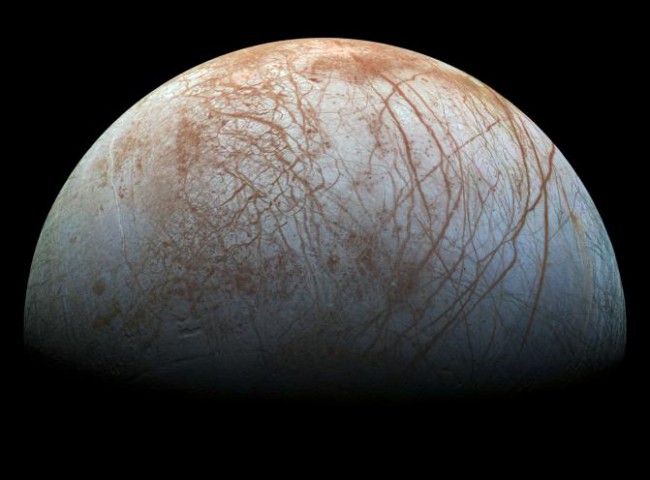The amazing surface of the Jovian moon Europa, as captured by NASA's Galileo spacecraft. NASA / JPL / SETI Institute
A close look at the icy surface of Jupiter’s moon Europa reveals a stunning landscape, where long, curving and linear cracks crisscross the surface, interrupted by regions of jumbled terrain.
Color variations across the spattered surface are associated with different geological features: bright white patches contain relatively pure water ice from crater ejecta, red or brown areas show where briny water carrying unknown compounds has been squeezed to the surface, and turquoise regions are relatively old icy plains.
Researchers are eager to learn more about how these markings hint at the geological history of Europa, and the chemistry of the global ocean that exists an estimated 100 km (60 miles) beneath its icy exterior.
So they produced a new version of what is perhaps NASA’s best view of Europa yet. Although the composite’s near-infrared, green, and violet images were obtained in the late 1990s by NASA’s Galileo spacecraft, the original mosaic had lower resolution and strongly enhanced color. This is the first time that the scene has been reproduced using modern image-processing techniques.

